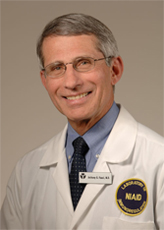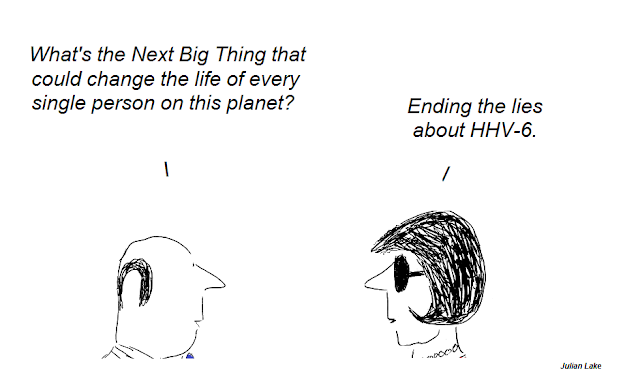How HIV is covering up the truth about Kaposi's Sarcoma in Chronic Fatigue Syndrome.
"In 2018, it is estimated that more than 1.1 million people in the United States are living with HIV infection." But if Kaposi's Sarcoma is the real AIDS epidemic, many millions more are suffering from the real AIDS virus. That includes everyone with Chronic Fatigue Syndrome.
http://www.jnccn.org/content/17/2/171.full
A company founded by Robert Gallo suggests 65% of gay men are infected with Kaposi's Sarcoma virus. These two grant requests present a disturbing picture of a virus that could turn the AIDS epidemic paradigm upside down.
DESCRIPTION (provided by applicant): Kaposi's sarcoma herpes virus (KSHV) also known as human herpes virus 8 (HHV-8) causes several cancers including Kaposi's sarcoma, primarily in immune-compromised patients. HHV-8 has been shown to be transmitted sexually, through saliva, and through infected blood and organs to recipients. While a number of serological assays have been devised in the research setting to detect HHV-8 infection, there are no FDA-approved assays. Furthermore, there is no gold standard diagnostic assay for HHV-8 infection and none are of adequate sensitivity and specificity to be used commercially for diagnostic or blood screening purposes. Nevertheless, these assays have revealed that as much as 3 to 5% of US blood donors have been infected with HHV-8, and some high-risk populations such as homosexual men, the HHV-8 prevalence is as high as 65%. Thus, there is a need for a commercial diagnostic to identify HHV-8 infected individuals to prevent further transmission of this virus within thegeneral population and immune-compromised individuals as well as into the general blood supply. The overall goal of this project is to develop a sensitive and specific serological multi-antigen assay for the detection of HHV-8 antibodies that can be usedcommercially to diagnose at-risk patients and identify blood/tissue donors with HHV-8 infection. Epiphany's first-generation HHV-8 enzyme- linked immunosorbent assay diagnostic (ELISA), composed of a single antigen assay and a dual antigen assay, provide gt80% sensitivity and 96% specificity in identifying HHV-8 infected individuals and thus one of the more sensitive diagnostics. However, to be a commercial success, the sensitivity and specificity needs to be improved which we propose by improving the quality and number of capture antigens. In our Phase I grant, we demonstrated the feasibility of our approach by identifying an improved K8.1 capture antigen expressed in a eukaryotic system. To further optimize the assay for commercial use, we will in Aim 1 expand our search for both improved and new capture antigens, then in Aim 2 we will develop a multi-antigen assay. In Aim 3 we will conduct pilot-scale production and beta testing of the diagnostic assay to determine the specificity and sensitivity of the assay by retrospective testing of clinical blood samples. Achieving the goals in this project would generate a commercial HHV-8 diagnostic test which will identify infected patients and donors to reduce transmission risk and to make the blood supply safer.PUBLIC HEALTH RELEVANCE: Infection with the herpes virus HHV-8, only discovered in 1994, may cause several cancers including Kaposi's sarcoma, especially in patients with weak immune systems such as those with HIV. HHV-8 can be transmitted sexually, through saliva, and via blood and organ donations and approximately up to 5% of blood donors in the US have been infected with HHV-8. The project proposes to develop for commercialization a blood test to identify HHV-8 infected individuals thereby providing a diagnosis for infected individuals to understand their risk and modify their behavior as well as make the blood supply much safer for high-risk individuals and blood recipients in general.
Project Summary Abstract
Kaposi's sarcoma herpes virus KSHV is an oncovirus that causes several cancers including Kaposi's sarcoma KS It is estimated that to of U S blood donors have been infected with KSHV yet in some high risk populations such as homosexual men prevalence is as high as In spite of HAART KS remains the second most common AIDS associated malignancy A third of AIDS KS cases now arise in individuals with relatively high CD cell counts and low HIV viral load A recent study has observed a continuing high prevalence and increased acquisition of KSHV in HIV infected persons on HAART The data clearly indicate that KS is still occurring in HIV infected individuals even in the context of successful HAART In immunosuppressed populations approximately in transplant patients will develop KS The prevalence of KSHV is responsible for the continuing incidence of KS and its associated reduction in life expectancy of HIV individuals Despite its strong disease association particularly in the HIV and immunosuppressed populations there is no FDA approved clinical diagnostic test for KSHV and consequently a significant unmet need remains for a simple cost effective commercially viable KSHV diagnostic kit that would be an essential component of any effort to control virus transmission and monitor serostatus of those already infected The ability to gauge the KSHV serostatus of an HIV individual would help clinicians make appropriate interventional choices to prevent KS onset The overall goal of this project is to develop a serological multi antigen assay for the detection of KSHV antibodies that can be used commercially to diagnose at risk patients and identify blood tissue donors with KSHV infection In prior SBIR Phase I and II work Epiphany developed a single well multi antigenic KSHV enzyme linked immunosorbent assay ELISA called Combo In screening a sera panel containing both KSHV true positives and normal low risk blood donors Combo was the only assay out of other independent ELISAs to detect all consensus KSHV samples with excellent specificity and sensitivity estimated andgt respectively For the next stage of the kit development it is critical to examine Comboandapos s performance against large sera banks of epidemiologically validated KSHV positive and negative controls with relevant confirmatory assays to establish the true effectiveness of the assay A collaborative consortium that merges Epiphany with the biomedical and clinical research capabilities of the University of Miami UofM Miller School of Medicine the Miami Center for AIDS Research CFAR and the labs of Dr Enrique A Mesri CFAR has been created Together Epiphany and Miami CFAR are uniquely equipped to achieve the following Aims In Aim synthetic manufacturing and analytical process development will be implemented followed by pilot production of a set of Combo diagnostic ELISA kits In Aim these kits will be assessed and optimized by screening retrospective clinical blood samples and serologically characterized plasma PMBCs and validated by western blot In Aim large scale kit production will commence Assay stability and validation studies will be performed A larger panel of HIV sera and tissues available to UofM CFAR its cores and transplant centers and national repositories will be massively screened to establish sensitivity and specificity Achieving the goals of this project will establish the clinical and commercial value of Combo ultimately resulting in the first FDA approved clinical diagnostic assay for KSHV Project Narrative Kaposiandapos s sarcoma herpes virus KSHV is an oncovirus that causes several cancers including Kaposiandapos s sarcoma KS especially in patients with weakened immune systems such as those infected with HIV Even in the age of HIV antiretroviral therapy KSHV co infection remains a serious health issue for the HIV positive population and is still the second most common cause of malignancies among AIDS patients Despite its strong disease association particularly in the HIV positive and immunosuppressed populations there is no FDA approved clinical diagnostic test for KSHV and consequently this project seeks to develop a simple cost effective commercially viable KSHV diagnostic assay kit that would be an essential component of any effort to control virus transmission and monitor serostatus of those already infected in order to help clinicians make appropriate interventional choices to prevent KSHV related disease
"Persons infected with KSHV can asymptomatically shed the virus. It is advised to practice safe sex with infected individuals and curtail activities where saliva might be shared during sexual activity."
http://www.herpes.com/hhv-8.html
This is what oral Kaposi's Sarcoma looks like.
Source: https://doctorspiller.com/kaposis-sarcoma/
Compare it to these crimson crescent lesions in the mouths of Chronic Fatigue Syndrome patients.
"Burke A. Cunha, MD, discovered what he called crimson crescents in the mouths of 80% of his CFS patients. After the word got out, Cunha received calls from other parts of the country. Physicians began telling him that they also were finding the crimson crescents in their patients once they looked for them."
https://www.prohealth.com/library/crimson-crescents-facilitate-chronic-fatigue-syndrome-cfs-diagnosis-11266
Chronic Fatigue Syndrome patients may have undiagnosed internal Kaposi's Sarcoma. Susan Levine found HHV-8, the Kaposi's Sarcoma virus, in half of CFS patients she looked at.
Prevalence in the Cerebrospinal Fluid of the Following Infectious Agents in a Cohort of 12 CFS Subjects
Susan Levine
Published online: 04 Dec 2011
ABSTRACT
Over the last decade a wide variety of infectious agents has been associated with the chronic fatigue syndrome (CFS) as potential etiologies for this disorder by researchers from all over the world. Many of these agents are neurotrophic and have been linked previously to other diseases involving the central nervous system (CNS). Human herpes virus-6 (HHV-6), especially the B variant, has been found in autopsy specimens of patients who suffered from multiple sclerosis. Because patients with CFS manifest a wide range of symptoms involving the CNS as shown by abnormalities on brain MRIs, SPECT scans of the brain and results of tilt table testing we sought to determine the prevalence of HHV-6, HHV-8, Epstein-Barr virus (EBV), cytomegalovirus (CMV), Mycoplasma species, Chlamydia species, and Coxsackie virus in the spinal fluid of a group of 12 patients with CFS. Although we intended to search mainly for evidence of actively replicating HHV-6, a virus that has been associated by several researchers with this disorder, we found evidence of HHV-8, Chlamydia species, CMV and Coxsackie virus in 6/12 samples. Attempts were made to correlate the clinical presentations of each of these patients, especially the neurological exams and results of objective testing of the CNS, with the particular infectious agent isolated. It was also surprising to obtain such a relatively high yield of infectious agents on cell free specimens of spinal fluid that had not been centrifuged. Future research in spinal fluid analysis, in addition to testing tissue samples by polymerase chain reaction (PCR) and other direct viral isolation techniques will be important in characterizing subpopulations of CFS patients, especially those with involvement of the CNS.
https://www.tandfonline.com/doi/abs/10.1300/J092v09n01_05
Everything you wanted to know about Kaposi’s Sarcoma in Chronic Fatigue Syndrome patients and the growing CFS epidemic of HHV-8, one of the two or three viruses that may be causing Kaposi’s Sarcoma.
Excerpted from The
Chronic Fatigue Syndrome Epidemic Cover-up, a bestseller on Amazon.
Neenyah Ostrom began one of my favorite series
of articles in the same issue. Titled “The Color Purple,” Ostrom reported,
“Burke Cunha, M.D. who is chief of infectious disease at Winthrop-University
Hospital (Mineola, Long Island), has described what he calls ‘crimson
crescents’ that appear in the throats of more than 80 percent of chronic
fatigue syndrome (CFS) patients. Cunha describes the crescents not only as
‘crimson,’ but ‘purplish.’ The reddish-purplish regions found in CFS patients’
throats sounded quite similar to KS (Kaposi’s sarcoma) in the throat, commented
an ‘AIDS’ doctor [who wished to remain anonymous] to whom they were described.
Is it possible that the crimson crescents observed in the throats of CFS
patients are actually a type of KS?” Ostrom
raised the possibility that the lesions in the throats of CFS patients
connected them to the theory that Florida researchers held about KS being the
unrecognized but unifying central pathological event AIDS. As I previously
reported, the Florida team, headed by Dr. George Hensley, had turned the AIDS
paradigm upside down, by finding KS in nearly 100% of AIDS patients, when they
explored the internal organs closely during autopsies of AIDS patients. Their
fascinating work suggested that KS preceded AIDS and caused more of the immune
problem in AIDS than previously thought.
Basically, Ostrom
was asking if the KS-like lesions, in the tonsils of [CFS]patients, were an
indication that some kind of unrecognized indolent KS was present internally,
something that physicians would not even be thinking about because of the
conceptual wall that socially hostile epidemiology had built between AIDS and
chronic fatigue syndrome. And the CFS patients were not particularly interested
in finding out if they shared KS with AIDS patients.
Ostrom went even
further, in the July 20 issue, and speculated that the dramatic digestive
problems in chronic fatigue syndrome were actually the result of the
unrecognized chronic or slowly progressive KS in the CFS patients’ digestive
tracts. Ostrom noted that Dr. Carol Jessop, who was talking to a group of
patients at a chronic fatigue syndrome conference, said, “Almost all patients
would say to me, ‘I was totally well until I got this [chronic fatigue
syndrome],’ and yet, when I took their past medical histories, I found it
wasn’t quite true. Now these aren’t disastrous problems. In fact, if they had
gone to their physicians for any of these problems such as irritable bowel,
diarrhea and constipation, abdominal cramping, bloating, flatulence, chronic
constipation, heartburn, etc., their physician would probably just say, ‘Oh,
take this’ and that would be it. So we as physicians didn’t relate to our patients
that this was a problem, so they considered themselves to be totally healthy.
Yet, if you look at the numbers, 89 percent of the [chronic fatigue syndrome]
patients had irritable bowel syndrome, diarrhea alternating with constipation,
and abdominal cramping pain episodically. Another 80 percent complained of
constant gas, bloating and flatulence. It’s amazing that we can all meet in
this room together.” Ostrom wondered if
“Jessop may have uncovered a fallacy in the prevailing wisdom of chronic
fatigue syndrome: that it begins as a respiratory, flu-like illness. Instead,
as she points out, it may be a digestive tract disturbance. Jessop’s
statistic—that more than 80 percent of CFS patients complain of irritable bowel
syndrome, abdominal pain, gas, bloating, etc.—corresponds to the more than 80
percent of CFS patients who exhibit a red-to-purplish crescent-shaped lesion in
their throats. (Helot, Paul, in the New York Times Long Island edition, January
14, 1992) . . . What if the digestive problems described by the CFS patients
are actually caused by KS in the gastrointestinal tract? According to the AIDS
Treatment News, ‘The most common HIV-related causes of gastric symptoms include
KS, lymphoma, and CMV [cytomegalovirus].’ And while KS is unusual in the
esophagus, it ‘may occasionally be found there.’ KS also can cause colitis and
diarrhea . . . in people with AIDS.” Ostrom noted, “Gastrointestinal symptoms,
it is realized in retrospect, were among the first signs of the ‘AIDS’
epidemic; and, it now seems, were also among the first symptoms seen in the CFS
epidemic. That observation raises what should be a relatively simple question
to answer: Are the gastrointestinal symptoms in both patient populations
caused, in part, by undetected KS?”
Excerpted from The
Chronic Fatigue Syndrome Epidemic Cover-up, a bestseller on Amazon.
Important
information about the Kaposi’s Sarcoma problem in Chronic Fatigue Syndrome
Whatever
happened to the concern about controlling the Kaposi's Sarcoma Virus? What
about all the infected Chronic Fatigue Syndrome patients?
Is Kaposi's
Sarcoma responsible for the digestive disorders in Chronic Fatigue Syndrome?
HHV-8 is a
Kaposi's Sarcoma cancer virus in many AIDS and Chronic Fatigue Syndrome
patients and is spread by kissing but the CDC couldn't care less.
Company
founded by Robert Gallo suggests 65% of gay men are infected with Kaposi's
Sarcoma virus.
Coagulation
issues may link Chronic Fatigue Syndrome, Kaposi's Sarcoma, and AIDS
Should
Chronic Fatigue Syndrome be added to the spectrum of Kaposi's
Sarcoma-Associated Herpesvirus, or Human Herpesvirus 8, Diseases?
Why Susan
Levine may have done the world's most important research on Chronic Fatigue
Syndrome.
Does HHV-8
viral load raise questions about the legitimacy of HIV viral load?
Can Chronic
Fatigue Syndrome patients with internal Kaposi's Sarcoma pass it on to their
partners?
Can most of
the symptoms of Chronic Fatigue Syndrome described by Paul Cheney be attributed
to internal Kaposi's Sarcoma?
Is Chronic
Fatigue Syndrome Associated Kaposi's Sarcoma
(CFSKS) a diagnosis all doctors should become aware of?
Stanford
University and Open Medicine Foundation should have a conference on diagnosing
Kaposi's Sarcoma in Chronic Fatigue Syndrome.
Why are
doctors not looking for Kaposi's Sarcoma in Chronic Fatigue Syndrome patients?
If Chronic
Fatigue Syndrome involves HHV-8 and Kaposi's Sarcoma, scientists will have to
ask if it came from pigs.
Does the Red
Blood Cell Deformability Issue Link Chronic Fatigue Syndrome to Kaposi's
Sarcoma and AIDS?
Will the
Montoya cytokine study show that Chronic Fatigue Syndrome is Kaposi's Sarcoma
Inflammatory Syndrome?
Is Chronic
Fatigue Syndrome a Kaposi's Sarcoma inflammatory cytokine syndrome?
How Kaposi's
Sarcoma almost undermined the HIV theory of AIDS
How did 50%
of Chronic Fatigue Syndrome patients become infected with a Kaposi’s Sarcoma cancer
virus?
Has the
moment finally come to address the issue of Kaposi's Sarcoma in Chronic Fatigue
Syndrome?
Oral
Kaposi's Sarcoma looks like the Crimson Crescents in Chronic Fatigue Syndrome
patients.
Were oral
crimson crescents the first obvious sign of Kaposi's Sarcoma in Chronic Fatigue
Syndrome patients?
Did Paul Cheney
ever consider the possibility that Chronic Fatigue Syndrome patients have
internal Kaposi's Sarcoma?
Is the red
blood cell deformability issue another clue that Chronic Fatigue Syndrome is
also a Kaposi's Sarcoma Syndrome?
Why is
nobody warned about exposure to HHV-8, the Kaposi's Sarcoma virus that even
patients with Chronic Fatigue Syndrome are sometimes infected with?
Do petechiae
in Chronic Fatigue Syndrome connect it to Kaposi's Sarcoma, HHV-8, and AIDS?
Whatever is
causing Kaposi's Sarcoma may be the real cause of Chronic Fatigue Syndrome and
AIDS.
A massive
epidemic of Kaposi's Sarcoma may be coming.
When
Kaposi's Sarcoma almost turned AIDS upside down.
Human
herpesvirus 6 activates lytic cycle replication of Kaposi's sarcoma-associated
herpesvirus.
All AIDS
patients have some form of Kaposi's Sarcoma in this study. Is the same true for
Chronic Fatigue Syndrome?
Crimson
crescents may suggest that all Chronic Fatigue Syndrome patients have Kaposi's
Sarcoma.
Do all
Chronic Fatigue Syndrome patients have an indolent form of Kaposi's Sarcoma?
Are these
marks on the skin a sign of Kaposi’s Sarcoma in Chronic Fatigue Syndrome?
On autopsy,
do the inflamed ganglia of Chronic Fatigue Syndrome patients resemble Kaposi's
Sarcoma?
What people
don't know about Kaposi's Sarcoma in Chronic Fatigue Syndrome and AIDS.
Do all
Chronic Fatigue Syndrome patients show internal Kaposi's Sarcoma upon autopsy?
Decades ago,
a New York newspaper sounded the alarm about Kaposi’s Sarcoma in Chronic Fatigue
Syndrome. The book about that newspaper is now a must-read bestseller on Amazon.
Purchase a hardcover, paperback, or Kindle version here.



















